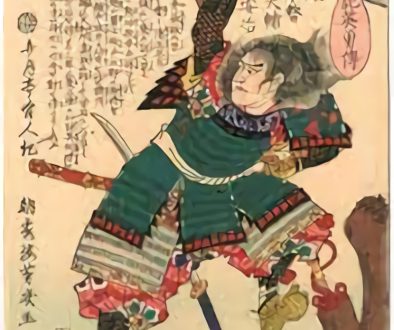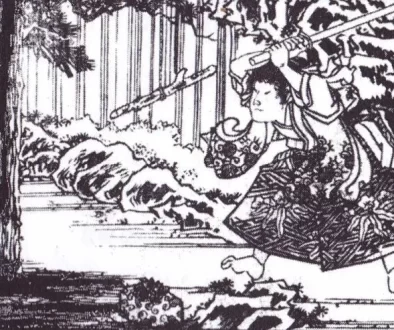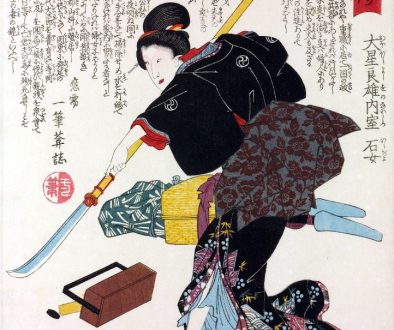Marriage
It was tradition for a samurai to have an arranged marriage. It was usually the job of a samurai friend or relation who held the same rank or higher, to arrange the partner. It was often difficult for samurai to meet women with the amount of time that they held duties, so this type of recommendation and arrangement was the idea for the samurai lifestyle.
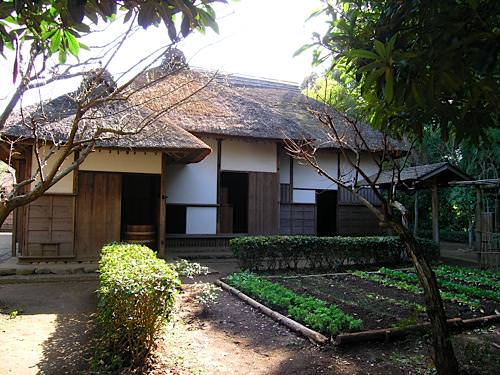
It was common for a samurai of medium to high rank to marry a woman from a samurai family, however, samurai from a lower rank were permitted to also marry with commoners. In this case, a dowry, which was the wealth of the daughter’s parents, would be brought by the women, to help set up the family house.

It is a common misconception that samurai women were subservient to their husbands. In reality, samurai women enjoyed the same social status as their husbands and could even inherit property or serve as samurai themselves.
Women who were married to samurai warriors were called “karamono-no-jo” or “women of the house.” Not only did these housewives have more freedom than their counterparts in other parts of society, but they also played an important role in the family’s success.
How Feudal Social Structure was Affected by Women of Noble Birth
In feudal Japan, women of noble birth were considered as wives of samurai warriors and not as “ladies”. Some samurai women, such as Tomoe Gozen, went to battle with their husbands.
Women in feudal Japan were not allowed to hold any official positions outside of a family or a religious position. Noblewomen were expected to marry a samurai warrior and produce heirs. Tradition dictated that they had no say in the marriage choice.
How Female Society Worked in Feudal Japan and How Men & Women Interacted
One of the most important aspects of feudal Japan was the role of women. Women had to always be subservient to men. They could never make decisions on their own, which meant they would normally be seen as nothing more than an object or possession.
The marriage system in Japan during this time was very different from what we know today. Men and women were not equal within marriages and women had to obey their husbands in everything they did because it would reflect badly on their husbands if they did not comply.
The Role of Samurai Wives and How They Affected Japanese Society
Samurai wives were often left at home to take care of the household and the children. Sometimes they were even married to a samurai who was not their husband. There are many different ways that Samurai wives influenced Japanese society and it’s a very interesting topic for research!
Samurai wives tended to be overlooked in the history of Japan. They were not fighters, but rather women who stayed at home and took care of the children while their husbands went on campaigns. They would also trade goods on behalf of their husbands, as well as work as farmers or craftspeople. In many cases, samurai wives had an economic power that surpassed that of some samurai sons because they could inherit land from their fathers or use it as collateral for loans.
Marriage in the Takeda Clan
The Takeda Clan is a Samurai Clan that has been around for over 700 years. The clan consists mostly of men, thus creating a need to find wives outside of the clan to increase their numbers.
Marriage in the Imagawa Clan
The Imagawa clan is a Japanese feudal clan that was a minor regional power in the Tōkaidō region. The Imagawa house is considered one of the three great families of the Sengoku period or Age of Civil War, alongside the Uesugi and Takeda clans.
In 1518, Imagawa Yoshimoto had been granted dominion over Suruga Province by Imperial decree. In 1524 he succeeded to the headship of the house when his father, Imagawa Ujizane, retired from public life. At that time he changed his name from Yoshimoto to Yoshitsugu. Under Yoshitsugu’s leadership, the Imagawa began extensive preparations for war with their neighbors to the east and south. One year later he secured marriage with Princess Senhime of Mikawa.
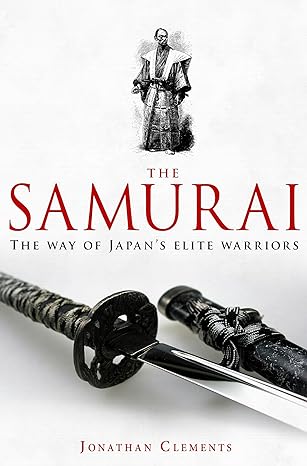
Marriage in the Hojo Clan
The Hojo clan was a powerful medieval Japanese clan that dominated the Kanto and Koshin areas of Japan and had a strong influence over the Kamakura shogunate in the 13th century.
The head of this clan was given the title “shikken” which is a term used for “regent” in Japan. The Hojo clan is well-known for its connection to political power and its success in maintaining peace and order when they dominated central Japan. It also helped them when they were in power to ensure that there was no opposition from other clans.

The marriage between these two clans would have been seen as a way to bring peace and stability, with an expectation that one day, Tsunayoshi would take control and become head of the Hojo Clan.
Traditional Samurai Clothing
The increasing globalization and international trade have led to a more homogenous world, where people of different backgrounds and cultures are blended together.
However, some people feel that this is leading to a loss of local culture and traditions. Japanese craftsmanship and traditional costumes can be seen as an example of such “traditionalism”.
There is no right or wrong answer to whether one should appreciate Japanese culture for its cultural appreciation or preservation. It all depends on the point of view.
What Clothing Does a Samurai Wear?
Samurai were warriors who lived in Japan, they often wore traditional clothing.
Samurai usually wore silk robes, these were called kimonos. They also wore a type of tunic, called hakama. These clothes protected them from the heat and cold of the Japanese summer and winter.
Samurai Clothing You Should Already Have In Your Wardrobe
There are many pieces of samurai clothing you should already have in your wardrobe. They all have their own meaning and history, so take the time to know about them.
This includes
Hakama: A traditional Japanese garment that is worn by both men and women. It is a type of pleated skirt, which is tied with a sash at the waist or hips and can be worn in various styles or manners.
Kimono: A traditional Japanese garment that combines elements of both dress and robe, usually made from silk, cotton, linen, or other natural fabrics such as hemp.
What’s the Best Way to Dress Like a Samurai?
In the past, Samurai were known for their strict dress code. They had a set of clothing that they would wear depending on their role in society.
While there is no definitive answer to what the best way to dress like a samurai is, it is worth noting that they did follow a strict dress code in the past and it might be interesting for you to follow this traditionally Japanese trend.
In Japan, there’s a new trend going around that is bringing back the term “samurai chic” – it is a style that blends modern fashion with traditional Japanese clothing. It features high-end fashion designs inspired by Kansai.
